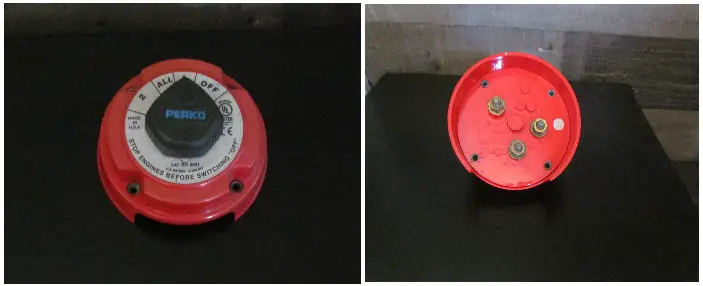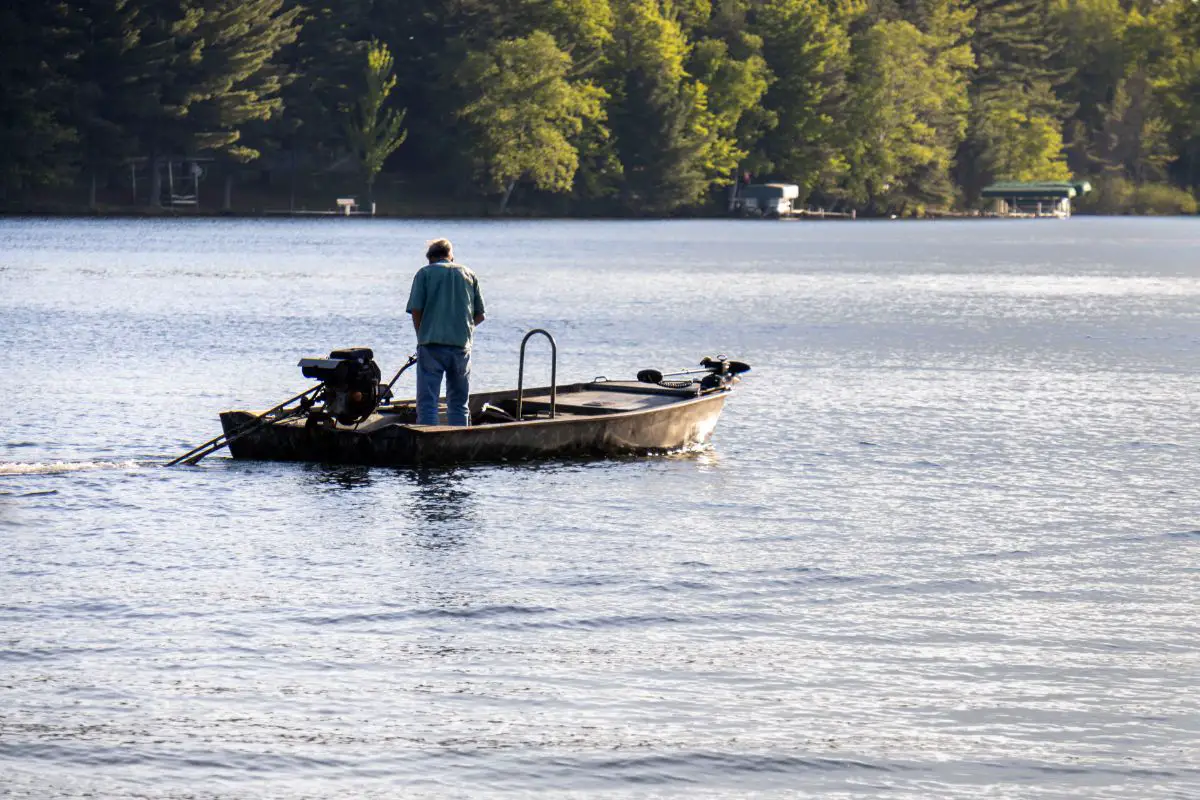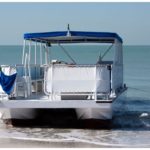So, you’re spending some time out on the water in your boat, and your battery has suddenly and unexpectedly died, leaving you stranded. Not to worry, for all hope is not lost.
In this article, we’ll show you how you can easily charge your trolling motor battery while on the water and some other useful tips and tricks. We are going to give you a full guide on how to charge a trolling motor battery while out on the lake. Just keep reading for more information on charging your trolling motor on the lake.
Note: most links in this article are Amazon.com Affiliate links, see Affiliate Disclosure, thank you.
Charging Trolling Motor Batteries On the Water
Trolling motor batteries are like many other boat batteries, so the charging methods are similar. When using onboard chargers, portable chargers, or trickle chargers, you’ll be able to supply your trolling motor battery with power.
However, you can also use outboard motors on your boat to charge the batteries.
The first way is if your battery systems are the same voltage, you can install a two-battery bank switch. Installation of battery switches is very straightforward.

First, connect the negative black wires on a terminal block from your motor, main motor battery, and trolling motor battery. Then connect the red positive wire to the studs on the back of the battery switch.
Typically, the studs will be marked common or feeder for the motor wire, BAT1 for the main motor battery, and BAT2 for trolling motor battery. For this application, leave the switch in position “1” during normal operation.
When you need a charge, turn the switch to the “ALL” position and start your main motor immediately. The longer you run your main motor, the more charge you will get.
When you are done, turn the motor off, then return the switch to the “1” position. We like to start the main motor again and run at high idle for two more minutes. Results of this method will vary depending on your main motor alternator size.
A Minnkota alternator charger like the MK-2DC is a great option for trouble-free charging on the water. Installation is very simple with plainly marked wires. Three sets of wires connect to the batteries, and one purple wire connects to your ignition key system.
The device automatically distributes extra energy to your trolling motor batteries when your motor runs. This is a limited amount of amperage, but it can save the day if you have an Ulterra that needs the power to stow.
Also, the model mentioned is perfect for three battery systems of 12 or 24 volts, but they also have two battery (12 volts) and four battery models(36 volts).
If you are looking for a more advanced option for your 24-volt trolling motor, a Victron Orion-Tr 12/24 volt could be a great option. This device is a fully programmable battery isolated dc to dc charger.
Installation is simple, connect your main motor battery to the input, and connect your 24-volt system to the output in the same manner as your 24-volt trolling motor. Load the app on your mobile phone and choose a pre-programmed option.
We typically recommend 10 amp models for most boats, but for boats with large outboard motors or inboard motors, a 30 amp option is great. Of course, there are 12-volt options which are our top pick for lithium battery systems.
There are two other options for charging trolling motor batteries on the water, but both are better suited for trickle charging your batteries between uses.
Solar panels can provide supplemental power during the day but will not keep up with normal use. They are great if you only fish for a few hours and can let the solar panels recharge your boat during the sunniest parts of the day. We have a full article on solar panel options with a how-to section.
Wind turbines are very common on sailboats and come in various sizes. However, they don’t provide very many watts. The low watts mean it can take a long time to recharge your trolling motor batteries. But a wind turbine might be perfect if you have a boat in moorage and don’t use it daily.
Charging Your Trolling Motor Battery Using a Charger
In the best-case scenario, you’ll have a charger on board in case of emergencies. While it’s good to ensure you’ve always got a charger on board, it’s also important to ensure that you’re using the right charger for your boat.
Types of Chargers
Just like there are many kinds of boats on the market, there is also a wide range of charging products you can choose from. Even with this variety, boat chargers can be separated into just two distinct categories – portable and onboard.
As the name suggests, portable chargers are known for being portable and versatile in many situations, including when you’re out on the water. They are much more affordable than their onboard counterparts, though their slow charging rate is one of their main disadvantages.
On the other hand, onboard chargers are slightly easier to use since they are always connected to your boat’s battery system. You need to connect them to a standard 120V outlet to use them. Onboard chargers facilitate fast charging with the caveat of a higher price tag.
Charging a Trolling Motor Battery Using a Charger
Charging a boat battery can be done in one of two ways.
The more conventional method is to use an electrical charger connected to a 120V outlet, though you can also use solar-powered chargers, which are more innovative and environmentally friendly.
Before you use a traditional charger to charge your boat battery, you will need to get any kind of charger capable of drawing power from the 120V socket of your boat. This is an essential step for both charging methods.
Connecting the positive and negative cables to your battery’s terminals for charging is important if you use a portable charger. After that, you must plug the power-drawing wire into a 120V socket. Turn the outlet on and your battery will begin charging. It’s that simple!
Solar chargers can be a more cost-effective solution that constantly provides power to your battery. These chargers behave more like maintainers than chargers, thanks to their finite resources.
You must install the corresponding solar panel on your boat’s roof to use a solar charger. A charge controller such as an MPPT will optimize the panels’ output and control your charge cycle. You can then use the solar charger to charge your battery but be warned: the cost of panels and charge controller can be pretty steep.
Wrapping Up
As you can see above, there are a few different options for charging your trolling motor batteries when you are already out on the lake. For the best results, start with a large enough battery bank that you don’t find yourself short of power.
Next, add a backup option for extra power like the alternator chargers discussed above. Finally, adding a small gas trolling motor can prevent a dead battery from sending you home early from fishing.



